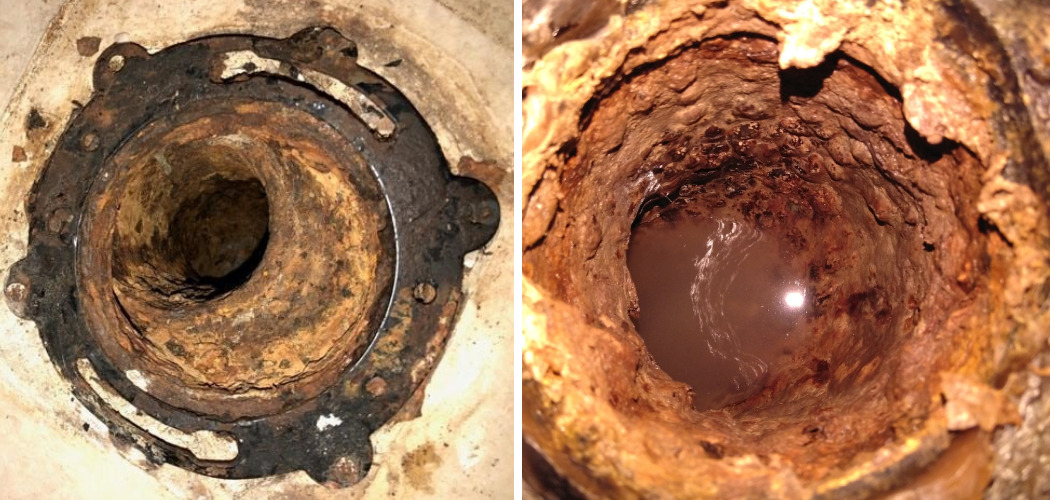Are you tired of dealing with rusty drain pipes that seem impossible to clean? Having a clogged or blocked-up sink, shower, and bathtub drain is irritating enough on it’s own. But when the inside of your drains are covered in rust, trying to keep them flowing freely can feel like an impossible task. Well, fret no more!
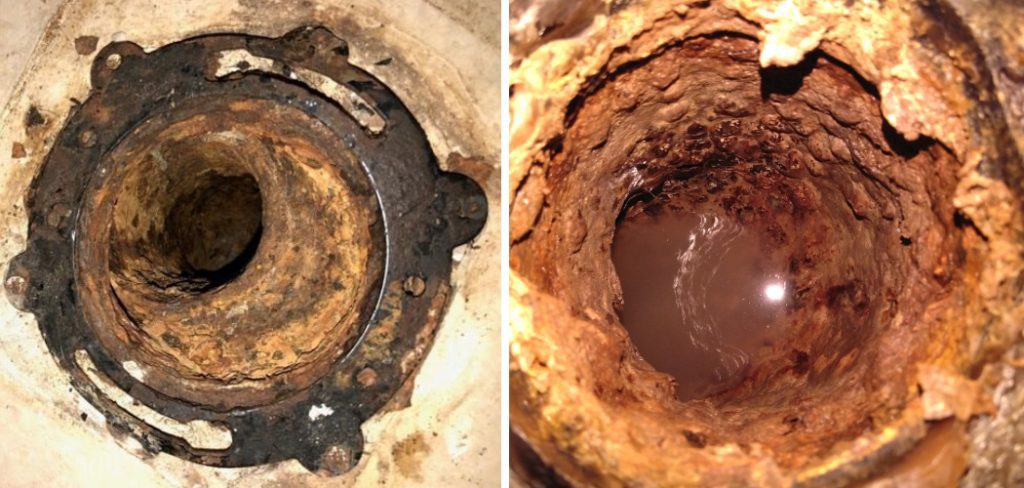
In this blog post, we’ll be taking a look at the different methods you can use to make sure those pesky rusted pipes are gone for good. From hydrogen peroxide and baking soda paste to commercial solutions explicitly made for this very job — we’ve got all the information you need to beat the rust blues and get back up and running smoothly.
Read on to learn how to remove rust from inside drain pipes!
What Will You Need?
The materials required for removing rust from inside drain pipes are relatively easy to come by. Some of the items needed include:
- Baking soda
- White vinegar
- Hydrogen peroxide
- Salt
- Commercial rust remover solution
Once you have these items, you’re ready to tackle those rusted drain pipes!
8 Easy Steps on How to Remove Rust From Inside Drain Pipes
Step 1: Prepare Your Solutions
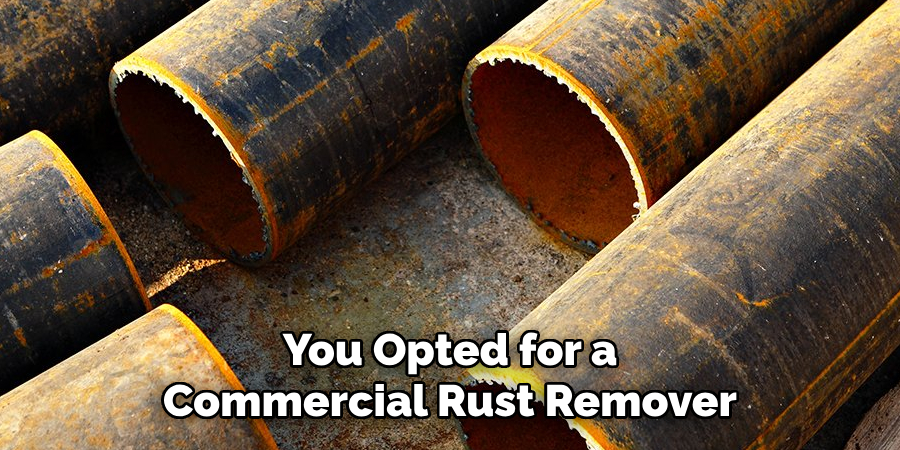
Start by preparing a DIY solution that consists of equal parts baking soda and white vinegar. Also, prepare a separate solution of hydrogen peroxide and salt. If you opted for a commercial rust remover, make sure to read and follow the instructions on its packaging. Your solutions must be ready to be used before you begin the rust-removal process.
Step 2: Application of Solutions
The next step in the process of how to remove rust from inside drain pipes involves the application of your prepared solutions. Pour your homemade baking soda and vinegar solution into the rusted drain pipe. Allow it to sit for about 15-30 minutes. This solution will help to loosen the rust. If you’re using a commercial rust remover, follow the instructions carefully. Safety precautions are important as these solutions could be harmful if not used properly.
Step 3: Scrubbing the Rust Off
Once the solutions have done their work loosening the rust, it’s time to scrub. Use a long-handled, stiff-bristle brush designed for pipe cleaning to do this effectively. Insert the brush into the drain and scrub vigorously to remove the rust. Be sure to clean as far into the pipe as the brush can reach. This step can be slightly laborious, but it’s critical in the process of removing rust from inside drain pipes.
Step 4: Rinse and Repeat
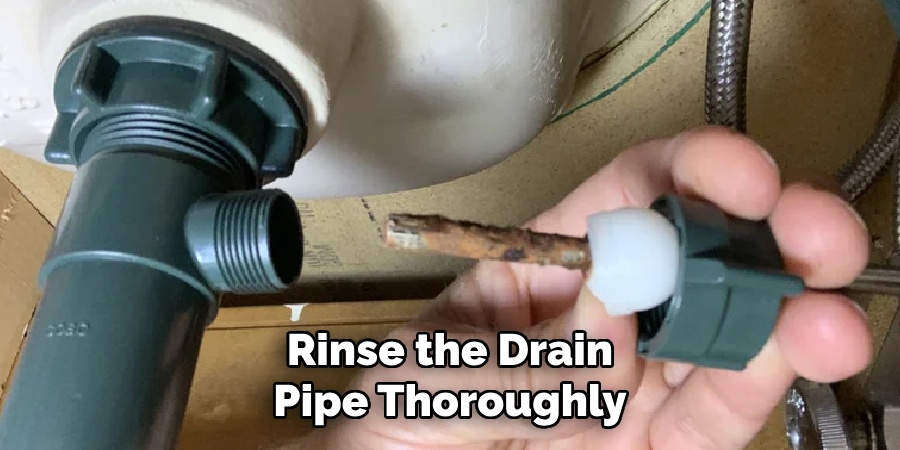
After scrubbing, rinse the drain pipe thoroughly with hot water. This helps to wash away the loosened rust and remnants of the solution. Inspect the pipe for any remaining rust. If there is, repeat Steps 2 and 3 until all the rust has been removed.
This might take multiple cycles, but it’s an essential part of the process. After all, the goal is to fully eliminate the rust from inside the drain pipes. Patience and perseverance will yield the best results.
Step 5: Final Cleanse
After all the rust has been successfully removed, it’s time to do a final cleanse. This step ensures that any residual solution or rust particles are flushed out of the drain pipe. Pour a generous amount of hot water into the drain, ensuring it reaches as far as possible into the pipe.
You can also use a commercial pipe cleaner for this step — just follow the instructions on the package. Once the pipe has been thoroughly rinsed, let it dry. You’ve now completed the process of removing rust from inside drain pipes. Congratulations!
Step 6: Regular Maintenance
Now that you’ve successfully removed the rust from inside your drain pipes, it’s essential to keep up with regular maintenance to prevent future rust formation. This could involve periodically repeating Steps 1 through 5, even if you don’t notice obvious signs of rust.
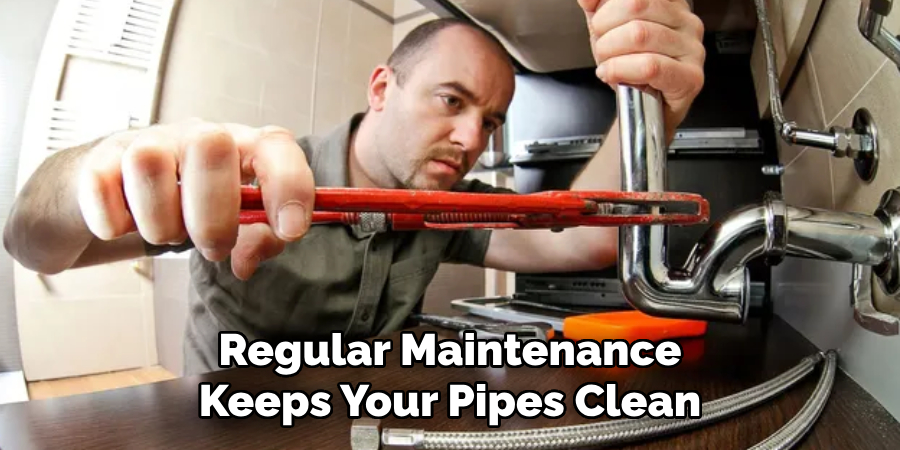
Regular maintenance keeps your pipes clean and helps prolong their lifespan. Remember, prevention is always better than cure when it comes to plumbing maintenance. In addition, avoid pouring acidic or corrosive substances down your drain, which can contribute to rust formation.
Step 7: Consider Pipe Replacement
If, after several attempts, you still observe persisting rust in your drain pipes, consider a pipe replacement. Sometimes, the rust and corrosion could be so extensive that cleaning it might not be the best solution. In such cases, you would need to enlist the help of a professional plumber to replace the affected pipes.
Although this might initially seem costly, it could save you the inconvenience and possible future expenses of recurrent rust issues. Remember, keeping your plumbing in the best condition possible is necessary; sometimes, this could mean starting afresh with new pipes.
Step 8: Monitor Your Water Quality
The quality of water flowing through your pipes can also affect rust formation. Hard water, with high mineral content, can accelerate rusting in your pipes. If you live in an area with hard water, consider installing a water-softening system.
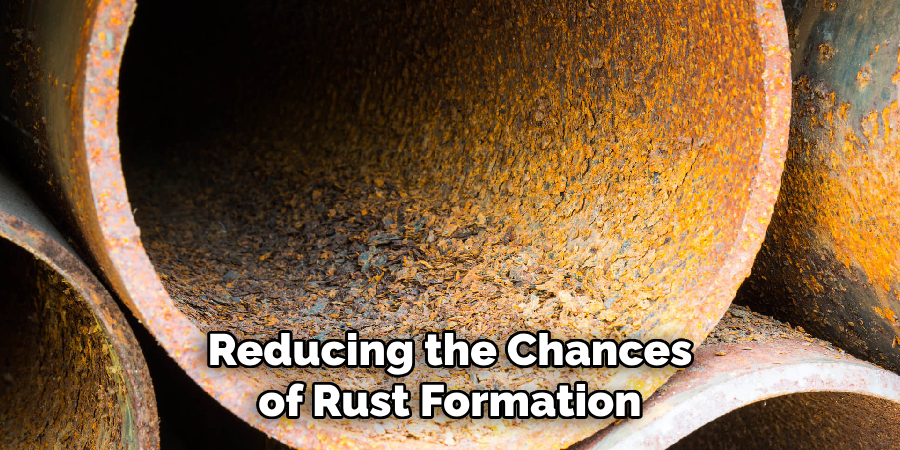
This system helps reduce the mineral content in your water, reducing the chances of rust formation. Regularly check the water quality and take necessary measures to maintain it optimally. This step is crucial in the process of how to prevent rust from forming inside drain pipes.
By following these steps, you can successfully remove rust from inside drain pipes and prevent it from recurring. Always prioritize safety when using any solutions, and don’t hesitate to seek professional help if needed.
5 Additional Tips and Tricks
- Use Protective Gear: It is advisable to equip yourself with rubber gloves and safety goggles. These can protect you from the harsh effects of the chemicals used in rust removal solutions and any rust particles that may splatter during the cleaning process.
- Use a Pipe Snake: Consider using a pipe snake if the rust is deep within the pipe and challenging to reach. This tool can get further into the conduit and dislodge stubborn rust spots.
- Use Boiling Water: Pouring boiling water into the drain pipe after applying your rust removal solutions can help accelerate the rust loosening process. Always exercise caution while handling boiling water to avoid burns.
- Schedule Regular Inspections: Scheduling regular professional inspections can help identify and address rust issues before they become severe. This proactive step can help extend your pipes’ life and save you from potentially costly repairs or replacements.
- Use Quality Plumbing Materials: Invest in high-quality plumbing materials that are resistant to rust and corrosion. While these materials may cost more upfront, their durability and longevity can save you money in the long run by reducing the need for frequent pipe replacements.
With these tips and tricks, you can effectively remove rust from inside drain pipes and maintain the health of your plumbing system.
5 Things You Should Avoid
- Avoid Ignoring Early Signs of Rust: Often, rust formation begins with subtle signs. If ignored, these can escalate into severe rusting that is more challenging to tackle. Early detection and action can save you time, effort, and potential costs in the long run.
- Avoid Using Harsh Chemicals: While using strong chemicals to eliminate rust quickly might be tempting, such substances can cause more harm than good. They can damage your pipes and adversely impact the environment. Always use eco-friendly and pipe-safe cleaning solutions.
- Avoid Neglecting Regular Maintenance: Regular maintenance is crucial in keeping rust at bay. Neglecting your pipes can lead to the accumulation of rust and other debris, potentially causing significant problems.
- Avoid DIY for Extensive Rust: If the rusting is extensive and deeply ingrained within your pipes, it’s advisable not to tackle it yourself. Instead, seek help from professional plumbers with the necessary expertise and equipment.
- Avoid Delay in Replacing Rusty Pipes: If your pipes are beyond cleaning and have suffered substantial rust damage, do not delay in replacing them. Using severely rusted pipes can lead to more serious issues like leaks or pipe bursts.
By avoiding these common mistakes, you can better manage rust in your drain pipes and maintain the overall health of your plumbing system.
Can Rusty Pipes Burst?
In some cases, yes, rusty pipes can burst. Rust weakens the structural integrity of pipes, making them more prone to leaks and bursts. It’s essential to address rust in your drain pipes promptly to prevent this from happening. Regular maintenance and early detection of rust issues can help prevent pipe bursts and save you from potential water damage.
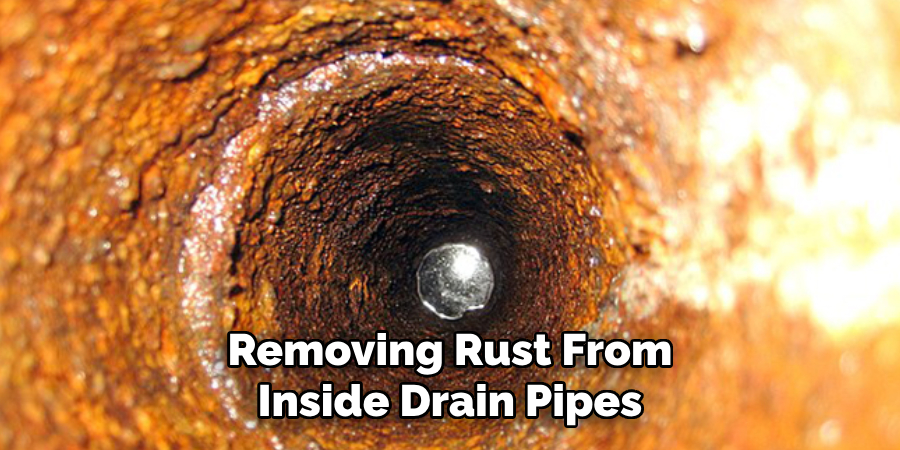
Overall, removing rust from inside drain pipes and taking necessary preventive measures can help you maintain the health of your plumbing system and prevent costly repairs. Remember, prevention is critical, but when in doubt, always seek professional assistance.
Conclusion
To summarize, rust is a common problem homeowners face regarding drain pipes. Fortunately, it’s not hard to take care of if you know how to remove rust from inside drain pipes. You can use natural products such as lemon juice and white vinegar to dissolve the rust or choose a commercial product with phosphoric acid as its active ingredient for tougher cases.
However, if your problem persists or worsens, you should contact a professional plumber for assistance. With a proper cleanup plan in action and regular preventative maintenance, your drains won’t suffer from rust buildup ever again.
Don’t let unsightly rust ruin your home or your peace of mind—take steps now to clean up your pipes before it’s too late!

